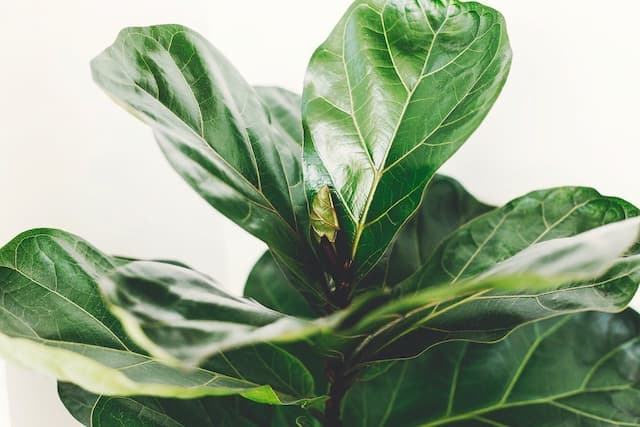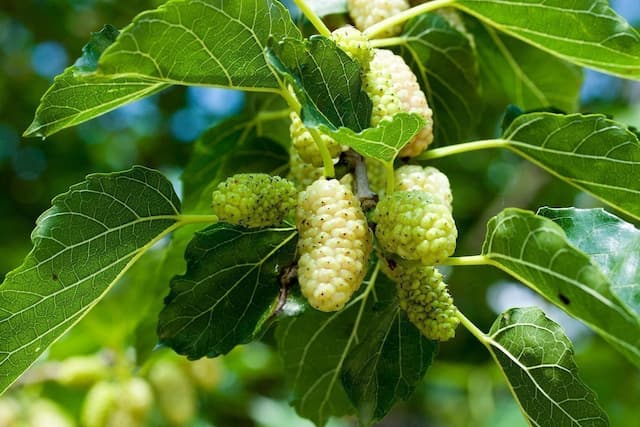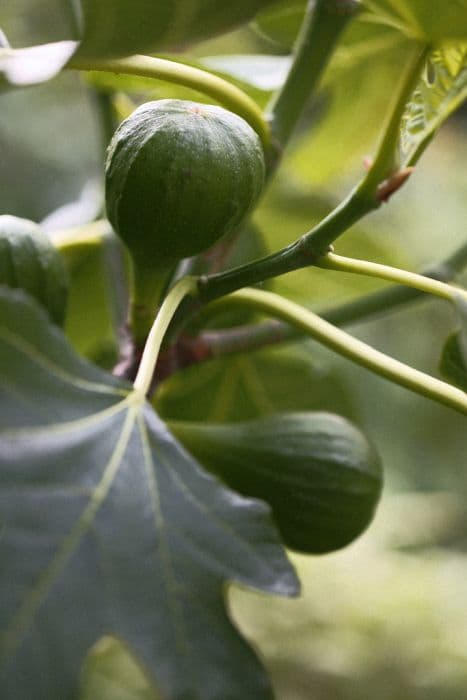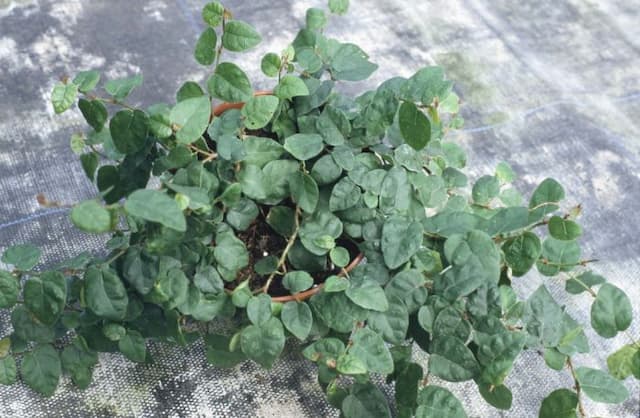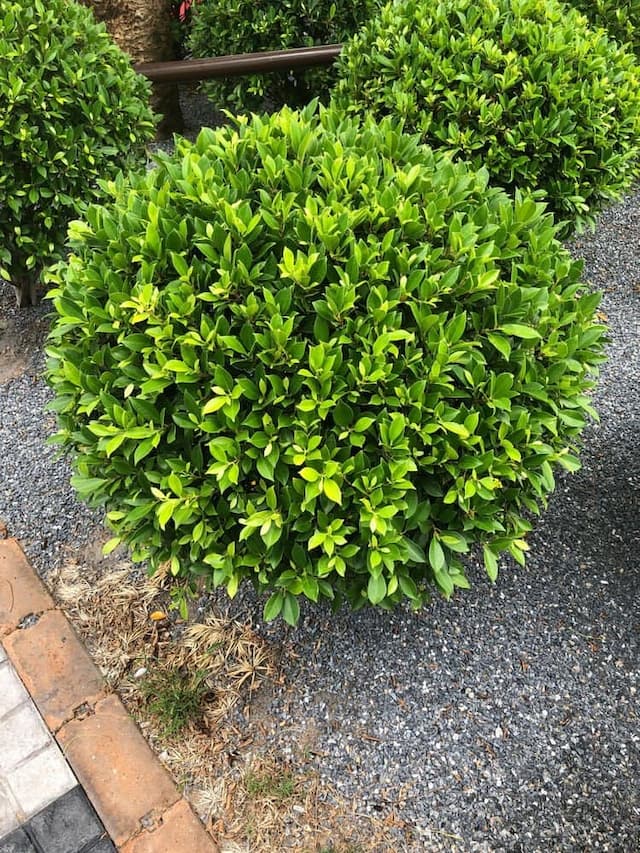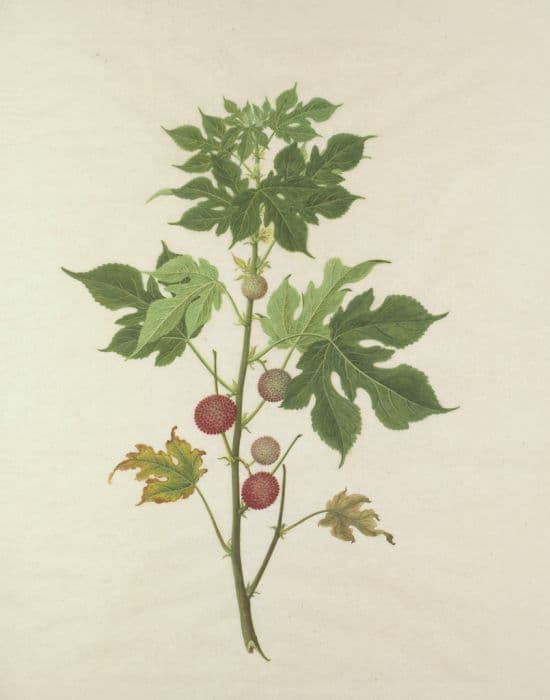Rubber fig Ficus elastica



ABOUT
Ficus elastica is an evergreen plant that is native to India and Malaysia. As an indoor plant, it typically grows to be 6-10 feet tall and 3-6 feet wide, with long, glossy, dark green leaves that are oval in shape and measure 6-12 inches in length. The leaves are attached to slender, flexible stems that allow them to move easily in response to changes in light and temperature.
Outdoors, ficus elastica can grow to be much larger, reaching heights of up to 100 feet in its native habitat. In cultivation, it will typically grow to be 30-50 feet tall and 20-30 feet wide. It has a thick, sturdy trunk and branches that support its large, leathery leaves, which can be up to 3 feet in length. The leaves may turn yellow or brown if the plant is stressed or not receiving enough light.
In both indoor and outdoor conditions, Ficus elastica is known for its ability to adapt to a wide range of growing conditions, making it a popular choice for gardeners and homeowners. It is generally easy to care for and can thrive in a variety of soil types, as long as it is well-draining and kept moist. It prefers bright, indirect light, but can also tolerate low light conditions.
Ficus elastica does not produce flowers in the traditional sense. Instead, it reproduces by producing small, inconspicuous flowers that are borne on short, fleshy stems called syconia. These flowers are located inside the syconia, which are found on the undersides of the leaves. The syconia are typically green or yellow in color and are about the size of a small pea.
About this plant
 Names
NamesFamily
Moraceae
Synonyms
Rubber fig, Rubber bush, Rubber tree, Rubber plant, Indian rubber bush, Indian rubber tree, Assam rubber, Caoutchouc, Snake tree
Common names
Ficus clusiifolia; Ficus cordata; Ficus elastica var. belgica; Ficus elastica var. benghalensis; Ficus elastica var. decora; Ficus elastica var. karet; Ficus elastica var. minor; Ficus elastica var. odorata; Ficus elastica var. rubra; Ficus karet; Ficus skytinodermis; Ficus taeda; Macrophthalma elastica; Visiania elastica
 Toxicity
ToxicityTo humans
Rubber fig is toxic to humans if ingested. The plant contains a substance called ficusin, which can cause irritation to the mouth and digestive system if ingested. In severe cases, ingestion of Ficus elastica can lead to difficulty swallowing, vomiting, and diarrhea. It is important to keep the plant out of reach of children, and to seek medical attention if the plant is ingested.
To pets
The sap of the Rubber fig tree contains a proteolytic enzyme, called ficin, and compounds such as psoralen, or ficusin, that can attack the DNA in cells. All parts of the Rubber fig treeare poisonous to pets if ingested.
It is important to keep the plant out of reach of pets, and to seek medical attention if the plant is ingested.
 Characteristics
CharacteristicsLife cycle
Perennials
Foliage type
Evergreen
Color of leaves
Dark green
Flower color
Green or yellow
Height
Up to 50 feet
Spread
Up to 30 feet
Plant type
Tree
Hardiness zones
9
Native area
Malaysia
Benefits
 General Benefits
General BenefitsFicus benjamina is effective at purifying the air by removing pollutants;
Release moisture into the air through a process called transpiration, which can help to increase the humidity in a room and improve indoor air quality;
Attractive plant with glossy leaves;
Easy to care for. Medical Properties
Medical PropertiesFicus elastica is not traditionally used in medicine, but some research suggests that it may have potential medicinal properties. For example, studies have found that extracts of Ficus elastica may have antibacterial and antifungal activity, and may also be effective at reducing inflammation.
In addition, the plant has been used in traditional medicine to treat a variety of ailments, including skin conditions, respiratory problems, and digestive issues. However, it is important to note that more research is needed to fully understand the medicinal properties of Ficus elastica and to determine its safety and effectiveness.
As with any plant or supplement, it is important to consult with a healthcare provider before using Ficus elastica for medicinal purposes. Air-purifying Qualities
Air-purifying QualitiesFicus elastica took part in NASA Clean Air Study.
Rubber fig is particularly effective at removing formaldehyde, which is a common indoor air pollutant that can cause respiratory problems. It is also known to remove other toxins from the air, including benzene, trichloroethylene, and xylene, which are found in a variety of household products such as paints, cleaning products, and furniture. Other Uses
Other UsesOne unusual way of using Ficus elastica is as a natural rubber source, and the plant has even been called a "Rubber fig" or "Rubber tree":
In the past, Ficus elastica was an important source of natural rubber, particularly in Southeast Asia. Today, it is still used as a source of natural rubber in some parts of the world, although it has largely been replaced by synthetic rubber in many applications.
The rubber from ficus elastica is extracted from the sap of the plant, which is collected by making incisions in the bark of the tree. The sap is then processed to remove impurities and dried to form a rubber material that can be used in a variety of applications.
Interesting Facts
 Feng Shui
Feng ShuiFicus elastica is often used in feng shui.
Ficus elastica is believed to bring prosperity and good luck to the home or office. It is also thought to promote relaxation and reduce stress, making it a good choice for areas where people spend a lot of time, such as living rooms or offices.
To use ficus elastica in feng shui, it is generally recommended to place it in the east or southeast area of a room or space, as these areas are associated with prosperity and good luck. Zodiac Sign Compitability
Zodiac Sign CompitabilityThere is no particular astrological association with Ficus benjamina therefore considered to be compatible with all signs.
Ficus benjamina is a popular and easy-to-care-for plant that is grown for its attractive foliage and graceful, upright growth habit, and can be enjoyed by people of all zodiac signs. Plant Symbolism
Plant SymbolismIn some cultures, Ficus is believed to have symbolic or spiritual significance, and are used in various rituals or ceremonies.
 Water
WaterTo water Ficus elastica, it is important to provide it with enough moisture to keep the soil evenly moist, but not waterlogged.
As a general rule, ficus elastica should be watered once a week, or as needed to keep the soil evenly moist.
In the summer months, when the plant is actively growing, it may need to be watered more frequently. Approximately 1 - 2 times a week.
In the winter months, when the plant is not actively growing, it may need to be watered less frequently - once a week or less. Light
LightFicus elastica is a popular indoor plant that is known for its ability to tolerate low light levels. However, the plant does best when it receives bright, indirect light, and it may struggle if it is placed in a location that receives little or no natural light.
It is best to place the plant near a window that faces east or west. Avoid placing the plant in a location where it will receive direct sunlight, as this can cause the leaves to burn. Temperature
TemperatureIn general, ficus elastica prefers warm temperatures and does best in a location where the temperature stays between 70 - 80 °F. It can tolerate some fluctuations in temperature, but it is generally best to avoid exposing it to extreme temperatures, as this can cause the plant to become stressed or damaged.
If you are growing ficus elastica as a houseplant, it is important to avoid placing it in a location that is too cold or too hot. For example, it is generally best to avoid placing it near drafts, heating vents, or air conditioning units, as these can cause the temperature to fluctuate and stress the plant. Pruning
PruningIt is necessary to remove only dead and diseased leaves.
 Soil
SoilFicus benjamina plants prefer a slightly acidic soil with a pH range of 6.0 to 6.5.
To create the best soil mixture for a Ficus benjamina plant, you can start with a well-draining potting mix that is specifically formulated for indoor plants. You can then add a small amount of perlite or coarse sand to the mix to improve drainage.
In addition to the potting mix, you can also add a small amount of compost or well-rotted manure to the soil to provide additional nutrients for the plant. Repotting
RepottingIt is generally best to transplant Ficus elastica in the spring or early summer, when the plant is actively growing. This is the time of year when the plant will be able to put down new roots and recover from the stress of being transplanted more easily.
Ficus benjamina plants should generally be transplanted every 2-3 years, or when they become pot-bound and outgrow their current pot. When selecting a new pot, it is important to choose one that is slightly larger than the current pot and has drainage holes to help prevent the plant from becoming waterlogged. Humidity & Misting
Humidity & MistingTo grow and thrive, Ficus elastica plants prefer a humidity level of around 50-70%.
To maintain the appropriate humidity level for your Ficus elastica plant you can place a humidity tray under the plant, filled with pebbles and water. Or you can mist the leaves of the plant regularly or use a humidifier to raise the humidity level in the room where the plant is located. Suitable locations
Suitable locationsIndoor
All year round
Outdoor
In warmer climates, such as USDA hardiness zones 10 and 11, these Ficus elastica can be grown outdoors as landscape plants or as patio or container plants.
To grow Ficus outdoors, it is important to choose a location that receives bright, indirect light and has well-draining soil. These plants are not tolerant of freezing temperatures, and if exposed to temperatures below 60°F, they may become damaged or die.Hardiness zone
10 - 11 USDA
 Life cycle
Life cycleFicus elastica is not known for producing flowers, but it can produce small, inconspicuous flowers that are followed by small fruits. The fruit is not typically harvested or eaten, but it can be attractive to birds and other wildlife.
Ficus elastica is a long-lived plant that can live for many years with proper care. Propogation
PropogationPropogation time
Spring - early summer
By CUTTINGS:
One of the most common methods for propagating Ficus elastica is by taking stem cuttings. To do this, use a clean, sharp knife or scissors to cut a 4 - 6 inch piece of stem from a healthy, mature plant. Remove the lower leaves and plant the stem cutting in a well-draining soil mix, making sure to keep the soil moist but not waterlogged.
By AIR LAYERING:
Choose a healthy, mature stem on the plant and make a small incision in the stem just below a leaf node. Cover the incision with a layer of damp sphagnum moss, and wrap the moss in plastic wrap to keep it moist. The stem will eventually form roots, and once it has developed a sufficient root system, it can be cut from the parent plant and potted up.
By ROOT DIVISION:
If you have a mature Ficus elastica plant that has become pot-bound, you can propagate it by dividing the roots. To do this, gently remove the plant from the pot and use a clean, sharp knife or scissors to divide the roots into smaller sections. Replant each section in a separate pot filled with well-draining soil, and water regularly to help the plants establish.
 Pests
PestsScale insects, Mealybug, Aphid
 Diseases
DiseasesRoot Rot, Powdery mildew
